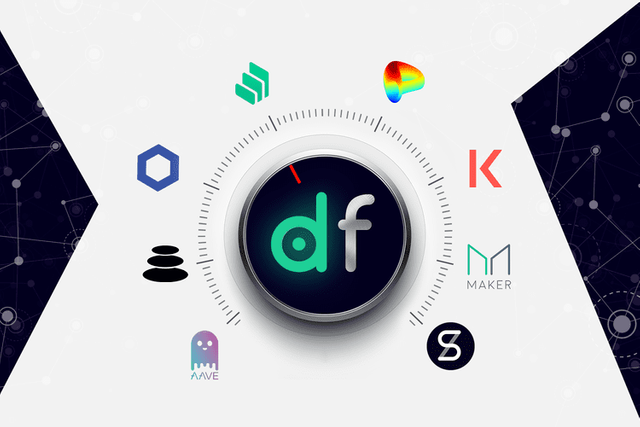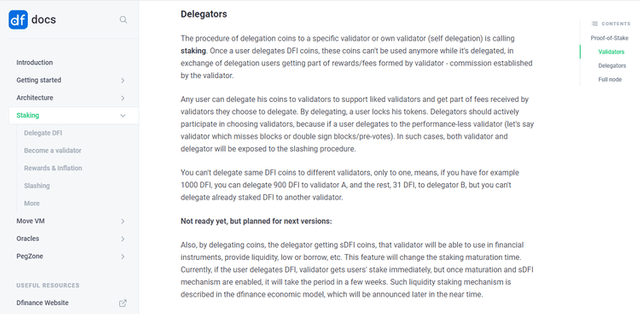Dfinance: A Layer 2 Blockchain Solution to take DeFi Mainstream

Dfinance is an entirely decentralized layer-2 network that provides the infrastructure needed to build different financial instruments and DeFi tools without any specialized technical skills.
The project is currently in the development phase. The present testnet, dubbed Balthier, is in 0.6 iterations with the mainnet scheduled for a late 2020 launch. Dfinance’s objective is to connect traditional finance with DeFi. DeFi is multiplying with huge potential to expand at a much higher rate. Dfinance team has identified that a great many portions of experts operate in only traditional financial sectors. The main barrier is lack of technical knowledge as blockchain still requires deep technical understanding and a steep learning curve. The firm seeks to erase this tech challenge by offering a beginner-friendly infrastructure to include them in DeFi growth.
Dfinance offers non-technical users to write their own smart contracts to create new financial products or simply join relevant modules or components to create new ones. This modular approach grants traditional and non-traditional financial gurus and developers tremendous flexibility to offer purpose-built tools and services.
CORE DFINANCE IN A NUTSHELL
Dfinance utilizes Cosmos’s Tendermint Proof-of-Stake (PoS) consensus mechanism. Besides being highly scalable, fast, and secure, Tendermint also brings two essential features into play - Byzantine fault tolerance for tackling malicious attacks or node failures and P2P communication.
Dfinance understands the need for a robust smart contract to support its objective. Therefore, it has selected Move language for writing smart contracts. The use of Move virtual machine (MVM) by Facebook’s Libra on its decentralized nodes makes it very resource-efficient. This ensures flexibility as Move VM’s transaction-as-script feature allows users to perform multiple operations within a single transaction. Also, the Dfinance platform is further protected through MVM’s bytecode verification functionality.
To give platform users further value, Dfinance has added an integrated DEX and a web wallet service. It enables users to build their own DEX.
REWARD PROGRAM THROUGH STAKING
What makes the Dfinance attractive to network participants is its staking program to earn rewards. Since Dfinance employs the PoS algorithm, the stakes' amount plays a significant role in selecting node validators. Users earn rewards when they lock their DFI coins in smart contracts to delegate their stake to preferred node validators. They earn proportionately to validators’ earnings using their stakes.
Dfinance strongly identifies the need to introduce a slashing mechanism to discourage illicit network activities. The platform incorporates various forms of fines, including a 5% slash in stakes for double signing and 1% for missing blocks.
Dfinance will bring certain liquidity staking mechanisms to bring various financial services like borrowing and liquidity for delegators through sDFI coins earned.

ORACLES: CONNECTING WITH REAL-WORLD FINANCE
Dfinance’s motto is to connect with traditional finance. Thus, bringing the value of real-world financial instruments and different data sources to the blockchain space requires the power of decentralized oracles.
Dfinance presently covers only price feed oracles. This allows the platform to obtain posted prices from various whitelisted oracles, calculate median, and record the last block’s final price. Writing personalized modules to utilize the price from the oracle is also available.
It currently supports only Binance platforms — supporting USDT/ETH and USDT/BTC pairs and fetching prices from. The platform would eventually support more exchanges and ticker/coin pairs.
PEGZONE: BRINGING INTEROPERABILITY
Dfinance considers blockchain interoperability of pre-eminent importance. Easy asset/value transfer across multiple blockchains leads to increased liquidity and fueling the DeFi growth.
As such, the platform utilizes the PegZone protocol to bring many layer-1 blockchains like Bitcoin, Ethereum, EOS, etc. into its operational domain. PegZone enables users to lock their tokens in a Bridge contract (smart contract) in that blockchain and get a proportionate amount of coin on their given addresses in the Dfinance network. Approved validators manage this process.
PegZone protocol empowers these approvers to charge a 0.1% fee of every transaction for cross-chain value transfer only while locking up coins.
Dfinance’s latest testnet version supports only Ethereum blockchain — bringing compatibility for ETH and various ERC20 tokens. The mainnet, along with future upgrades, will supplement more blockchains.
COMPOSABILITY THROUGH ELROND PARTNERSHIP
Composability is on the high-priority list of Dfinance. As a start, it has joined hands with Elrond Network, a high-performance public smart contract platform, to benefit together through augmented utility and reduced usability barriers.
This creates a bi-lane between the two networks. While Dfinance users can build new types of products, including Elrond asset-collateralized products, Elrond users can access existing instruments or create their own DeFi tools on the Dfinance platform.
Having network composability grants various modules referring to different asset classes, networks, and financial instruments in the system to band together and create new products.
Announcing the collaboration, Dfinance co-founder Boris Povod said:
“We aim to do for DeFi what Elrond is doing for blockchain — give everyone full access to its potential. I believe our collaboration has the potential to create a lot of value for the new economy.”
ABOUT DFINANCE
Dfinance is the newest project undertaken by the team members of the WINGS Foundation. The four co-founders head the team:
- Boris Povod, R&D Lead — Boris’s resume includes R&D Lead of WINGS Stiftung, blockchain developer of Wings.ai, lead developer of Crypti, and technical advisor for Cartesi and ECONOMIX.
- Sebastian Stupurac, Project & Product — Besides being a core team member of the WINGS Stiflung team, Sebastian has been the Chainlab CEO, Strategy advisor to AdEx lab, and INS Ecosystem.
- Stanislav Oskin, Business Developer — Core and Business Developer for WINGS Stiftung, the Wings.ai DAO platform, Oskin had been CTO of Eyecam, NeoCam, and NeoVSP.
- Arman Manukyan — A project adviser, analyst, and Wings investor, Arman’s LinkedIn profile shows he’s a previous Angel Investor, Founder, and CMO of Crypti (Lisk.io).
WINGS Stiftung, aka WINGS Foundation, is a not-for-profit foundation headquartered in Zug, Switzerland. With a vision of tokenization, the WINGS Foundation launched the WINGS DAO protocol. But it became irrelevant as ICO popularity faded away. The team unraveled a new opportunity in DeFi and decided to build the infrastructure platform on layer-2. Thus Dfinance was born.
Dfinance is such a promising project for DeFi
Dfinance is an entirely different circulated layer-2 network.
DeFi will be there soon and Dfinance would be ready for it.
layer 2 blockchain is the way to go.
The future of DeFi is here!